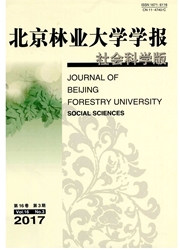

 中文摘要:
中文摘要:
作为农林学与医学的交叉学科,园艺疗法被证明对儿童孤独症干预效果显著,且无副作用。西方发达国家对园艺治疗关注广泛,已形成相对完善的治疗规范及体系。国内相关实验及临床报道少,且主要集中于对康复花园的设计规划进行探讨,对园艺疗法的其他形式鲜有关注、研究范围狭隘;对园艺疗法的康复机制多集中于心理学及园林设计层面的讨论。值得一提的是,森林疗法在国内研究极少,且常常被纳入环境卫生学科,但从其治疗手段及起效机制来看,应属于广义园艺疗法的范畴,因此也被本文纳入讨论。通过分析园艺疗法的多样形式、多种机制,旨在推动国内儿童孤独症园艺治疗的研究开展,并为临床应用提供更完备的理论依据。
 英文摘要:
英文摘要:
As a cross discipline of agroforestry and medicine, horticultural therapy has been proved to be effective in the treatment and rehabilitation of children with autism spectrum disorder (ASD) without any side effects. Western developed countries have paid close attentions to horticultural therapy and have already formed relatively perfect treatment standards and system of it. Very few domestic experiments and clinical reports of horticultural therapy can be found, and it is mainly focused on design and plan of healing garden, less concerned about other forms of horticultural therapy ; in other words, the scope of the study is relatively narrow. The rehabilitation mechanism of horticultural therapy is mostly focused on psychology and landscape architecture design. From the perspective of sociology, ecology and physiology, this paper explores the rehabilitation mechanism of horticultural therapy. What is worth mentioning is that forest therapy in domestic research rarely involved, and is often integrated into the environmental health sciences. However, in fact, from the view of treatment methods and effect mechanisms, forest therapy should belong to the category of generalized horticultural therapy, thus it is also discussed in this paper. Analyzing the various forms and multiple mechanisms of horticultural therapy in the treatment and rehabilitation of children with ASD, provides a more complete theoretical basis, aiming at promoting the development of domestic horticultural therapy and relevant clinical researches and applications.
 同期刊论文项目
同期刊论文项目
 同项目期刊论文
同项目期刊论文
 期刊信息
期刊信息
